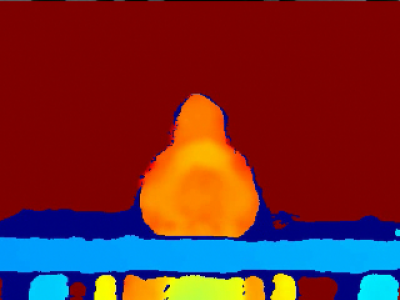activity recognition
To assist individuals in sports activities is one of the emerging areas of wearable applications. Among various kinds of sports, detecting tennis strokes faces unique challenges. we propose an approach to detect three tennis strokes (backhand, forehand, serve) by utilizing a smartwatch. In our method, the smartwatch is part of a wireless network in which inertial data file is transferred to a laptop where data prepossessing and classification is performed. The data file contains acceleration and angular velocity data of the 3D accelerometer and gyroscope.
- Categories:
 535 Views
535 Views
The JKU-ITS AVDM contains data from 17 participants performing different tasks with various levels of distraction.
The data collection was carried out in accordance with the relevant guidelines and regulations and informed consent was obtained from all participants.
The dataset was collected using the JKU-ITS research vehicle with automated capabilities under different illumination and weather conditions along a secure test route within the
- Categories:
 963 Views
963 ViewsHuman activity recognition, which involves recognizing human activities from sensor data, has drawn a lot of interest from researchers and practitioners as a result of the advent of smart homes, smart cities, and smart systems. Existing studies on activity recognition mostly concentrate on coarse-grained activities like walking and jumping, while fine-grained activities like eating and drinking are understudied because it is more difficult to recognize fine-grained activities than coarse-grained ones.
- Categories:
 664 Views
664 ViewsA commonly used definition of spatial disorientation (SD) in aviation is "an erroneous sense of one’s position and motion relative to the plane of the earth’s surface". There exists a wide range of SD use-cases dictated by situational factors, therefore SD has been predominantly studied using reduced motion detection experimental contexts in isolation. The study of SD by use-case makes it difficult to understand general SD occurrence and thus provide viable solutions. To investigate SD in a generalized manner, a two-part Human Activity Recognition (HAR) study was performed.
- Categories:
 347 Views
347 ViewsWith the rapid deployment of indoor Wi-Fi networks, Channel State Information (CSI) has been used for device-free occupant activity recognition. However, various environmental factors interfere with the stable propagation of Wi-Fi signals indoors, which causes temporal variation of CSI data. In this study, we investigated temporal CSI variation in a real-world housing environment and its impact on learning-based occupant activity recognition.
- Categories:
 454 Views
454 Views
The Badminton Activity Recognition (BAR) Dataset was collected for the sport of Badminton for 12 commonly played strokes. Besides the strokes, the objective of the dataset is to capture the associated leg movements.
- Categories:
 2827 Views
2827 Views





